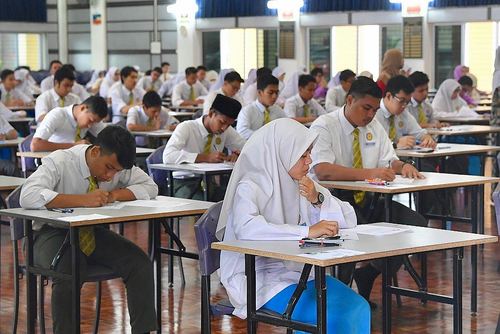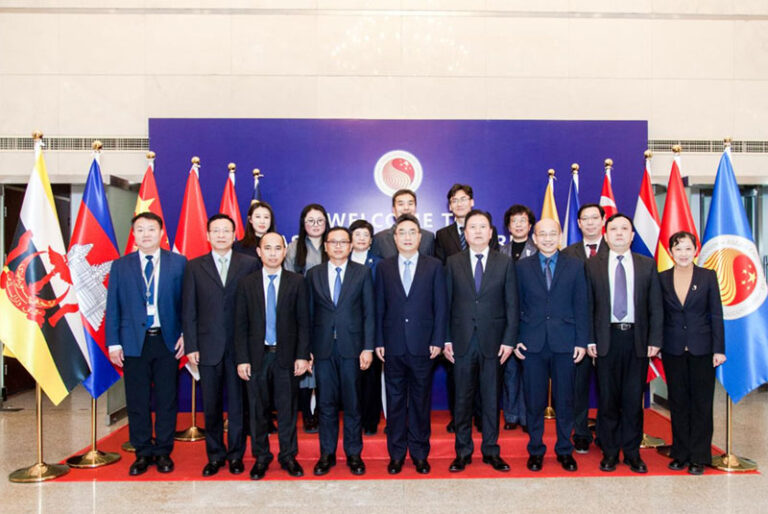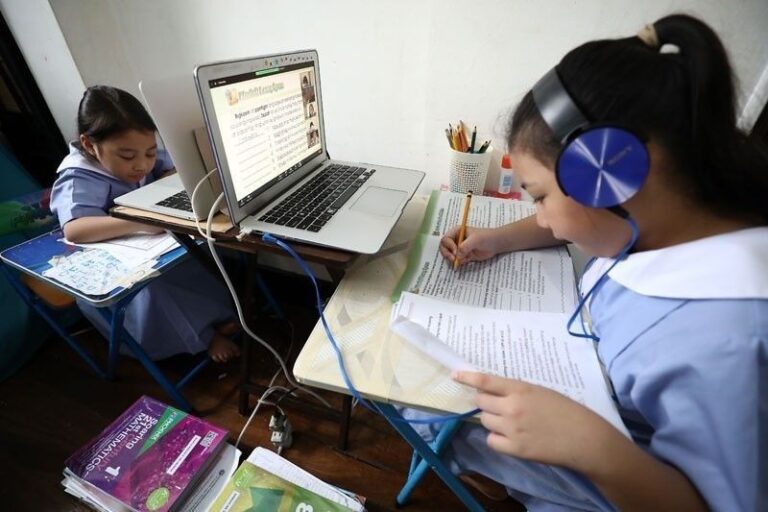Five Major Differences Between The Chinese & American Education System 中美教育体系的五个主要差异

Classrooms across the world are different, typically built upon government policy and cultural norms.
世界各地的教室都不同,通常建立在政府政策和文化规范的基础上。
In recent years, classrooms across the Western world have gone through some changes. However, one of the most prominent concerns and discussions across school districts is the need for more innovation, creativity, personalized learning, as well as the freedom to prepare our youth for the 21st-century. The traditional classroom is obsolete, and teaching the way we were even ten years ago requires drastic changes.
近年来,西方世界的教室经历了一些变化。然而,在学区范围内,最突出的关切和讨论之一是对更多创新、创造力、个性化学习以及为青少年准备21世纪所需的自由的需求。传统的教室已经过时,教学方式即使是十年前的也需要进行重大变革。
Also, teachers in the States used to have a bit more freedom, especially when it came to building a unique curriculum to meet student needs. Albeit things are changing, there is still a tremendous amount of work that needs to be done to prepare our youth for an unknown job future in the best way possible.
此外,在美国,教师过去拥有更多的自由,特别是在构建满足学生需求的独特课程方面。尽管事情正在改变,但仍然需要大量的工作来以最佳方式准备我们的青少年迎接未知的职业未来。
Both local and federal government in America still create and place a lot of weight on standardized tests, as well as provide teaching and learning standards-leaving the teacher out of the discussion.
在美国,地方和联邦政府仍然非常重视标准化测试,并提供教学标准,这使得老师无法参与讨论。
For local schools to continue to receive funding, public and private schools are required to follow the strings that come attached to those dollars.
为了让当地学校继续获得资金,公立和私立学校必须遵循附带在这些资金中的条件。
In Eastern countries, the most noticeable changes have come down to technology. Although test scores are incredibly critical in the Eastern world, students are slowly starting to take part in 21st-century activities to prepare for the competitive future that awaits. Also, in China, for example, school environments continue to place high levels of pressure on students to compete and maintain high grades.
在东方国家,最显著的变化主要体现在技术方面。尽管在东方世界,考试成绩非常关键,但学生们正逐渐开始参与21世纪的活动,以为即将到来的竞争激烈的未来做准备。而在中国,学校环境继续对学生产生很大的竞争压力,要求他们保持高分。
Below are the five significant differences between Chinese and American classrooms, followed by commentary from American teachers at HAWO American Academy.
以下是中国和美国教室之间的五个显著差异,接着是HAWO美国学院的美国教师的评论。
Classrooms
教室
Chinese teachers are responsible for larger student bodies in their classrooms than are American teachers. Some Chinese teachers work with more than 30 to 50 students. In America, teachers are beginning to have more freedom to focus on individual student needs. In China’s education world, the focus is more on the collective group of students as a whole. For example, in China, teachers can ask themselves, “What can I do to improve learning as a whole?” While American teachers ask themselves, “What can I do to improve his or her learning?”
中国教师负责更大规模的学生群体,比美国教师更多。一些中国教师要负责30到50名学生。在美国,教师开始拥有更多的自由,以关注个体学生的需求。在中国的教育世界中,关注的焦点更多地放在整体学生群体上。例如,在中国,教师可以问自己:“我能做些什么来提高整体学习水平?”而美国教师会问自己:“我能做些什么来提高他/她的学习水平?”
Teachers
教师
In the American school system after each year or grade, students will usually move on to a different teacher as they continue their education journey. In the Chinese education system, one group of students may have the same teacher throughout their education journey–or only two or three teachers, especially in the primary school years.
在美国学校系统中,每年或每个年级结束后,学生通常会继续他们的教育之旅,进入不同的老师班级。而在中国教育系统中,一组学生可能在整个教育过程中拥有同一位老师,或者只有两三位老师,尤其是在小学阶段。
Chinese teachers, like American teachers, need to meet specific teaching qualifications.
与美国教师一样,中国教师也需要符合特定的教学资格。
Testing
考试
Exams in the Chinese education system hold most substantial weight, and this pressure comes from both the home as well as the country.
中国教育体系中的考试占据最大的权重,这种压力既来自家庭,也来自国家。
The expectation for high grades has become ingrained in the Chinese culture, and all citizens take letter grades and standardized test scores seriously.
对高分的期望已经在中国文化中根深蒂固,所有公民都认真对待字母成绩和标准化考试成绩。
Not only does grading strictly determine the education level of the student, but it is also used to evaluate the teacher’s performance. If students do well on their exams, teachers often get a raise. In America, there can be slight consequences for teachers when it comes to student outcomes and performance on both oral and written exams.
分数不仅严格决定学生的教育水平,还用于评估教师的表现。如果学生在考试中表现出色,教师通常会获得加薪。在美国,当涉及学生的口头和书面考试成绩时,教师可能会面临轻微的后果。
Creativity
创造力
In America, the arts and sports are highly encouraged from a young age. In China, however, there is usually no time for the creative arts or sports, leaving a system that continues to focus on memorization and test scores. However, we are beginning to see more examples of creativity and innovation in China. Although this change is slow and new, it is beginning to bubble to the surface in small ways.
在美国,从小就极力鼓励艺术和体育。然而,在中国,通常没有时间从事创意艺术或体育活动,这导致一个继续注重记忆和考试成绩的系统。然而,在中国我们开始看到越来越多的创造力和创新的例子。尽管这种变化是缓慢而新的,但它正在以一些小的方式开始浮现。
Nationality and Individuality
国籍和个性
Chinese students don’t get praised as individuals. For example, if an American or Canadian student does a great piece of work, they may be rewarded with a gold star or a great job sticker. In China, the state celebrates education success as a whole.
中国学生没有作为个体受到表扬。例如,如果一位美国或加拿大的学生做了一份出色的工作,他们可能会得到一枚金星或一个出色的标签。在中国,国家庆祝整体教育的成功。
I had a chance to chat with some teachers in America and Canada who work for HAWO American Academy–working with Chinese students across the globe. Here is what they told me.
我有机会与一些在美国和加拿大为HAWO美国学院工作的教师进行交流,他们与全球的中国学生合作。以下是他们告诉我的内容。
Shaundra Schlapia, “I have learned students in China have homework even during breaks and holidays. I think most students complete homework. In my experience in America, teachers may or may not assign homework during the holidays, and expectations are different during this free time.”
Shaundra Schlapia:“我了解到中国的学生即使在休息和假期期间也有作业。我认为大多数学生都会完成作业。根据我在美国的经验,教师在假期期间可能会分配作业,也可能不会,而在这段自由时间内的期望是不同的。”
Jen, G., “In my province (Ontario) Canada, although homework differs from teacher to teacher, we are advised to assign an average of ten minutes per grade per night. Homework has to be purposeful with a significant extension about something the students have learned. They do not focus on learning anything new at home. Also, students in China have a much longer school day. My students tell me they have (subject specific) teachers in elementary schools, while we have a homeroom teacher who teaches most subjects. Finally, class size is a significant difference. In my province, we have a limit of 20 students up to 3rd-grade. My students from China tell me they are in classes of 50+ students.”
Jen, G:“在我的省份(安大略省)加拿大,尽管作业因教师而异,但我们建议每晚分配平均十分钟的作业时间。作业必须有明确的目的,并与学生学到的内容有重要的联系。他们不在家学习任何新知识。此外,中国的学生学校一天要上很长时间课。我的学生告诉我他们在小学有(特定学科的)老师,而我们有一个授课大纲老师负责大多数科目。最后,班级规模是一个重要的区别。在我的省份,我们对三年级以下的班级有20名学生的限制。我的中国学生告诉我他们的班级有50名以上的学生。”
Violeta Talavera, “Homework and reinforcement of learning is a significant factor in China. In America, teachers assign homework, however, sometimes teachers do not place as much weight assignments, and for some districts, students don’t always have to complete their work. There are even some school districts that have decided to do away with homework altogether. Others partner up with an outside company to assign homework, and since it’s usually based on technology, students tend to complete it.”
Violeta Talavera:“在中国,作业和学习的巩固是一个重要因素。在美国,老师布置作业,但有时老师并不给作业以太大的分量,而在一些学区,学生并不总是必须完成作业。甚至有一些学区已经决定完全取消作业。还有些学区与外部公司合作布置作业,由于通常基于技术,学生倾向于完成它。”
Heather Carter, “One critical difference I’ve noticed is that students in China never stop studying or learning, even during their summer vacation. Whereas students in America, it’s not required for students to study during the summer.”







